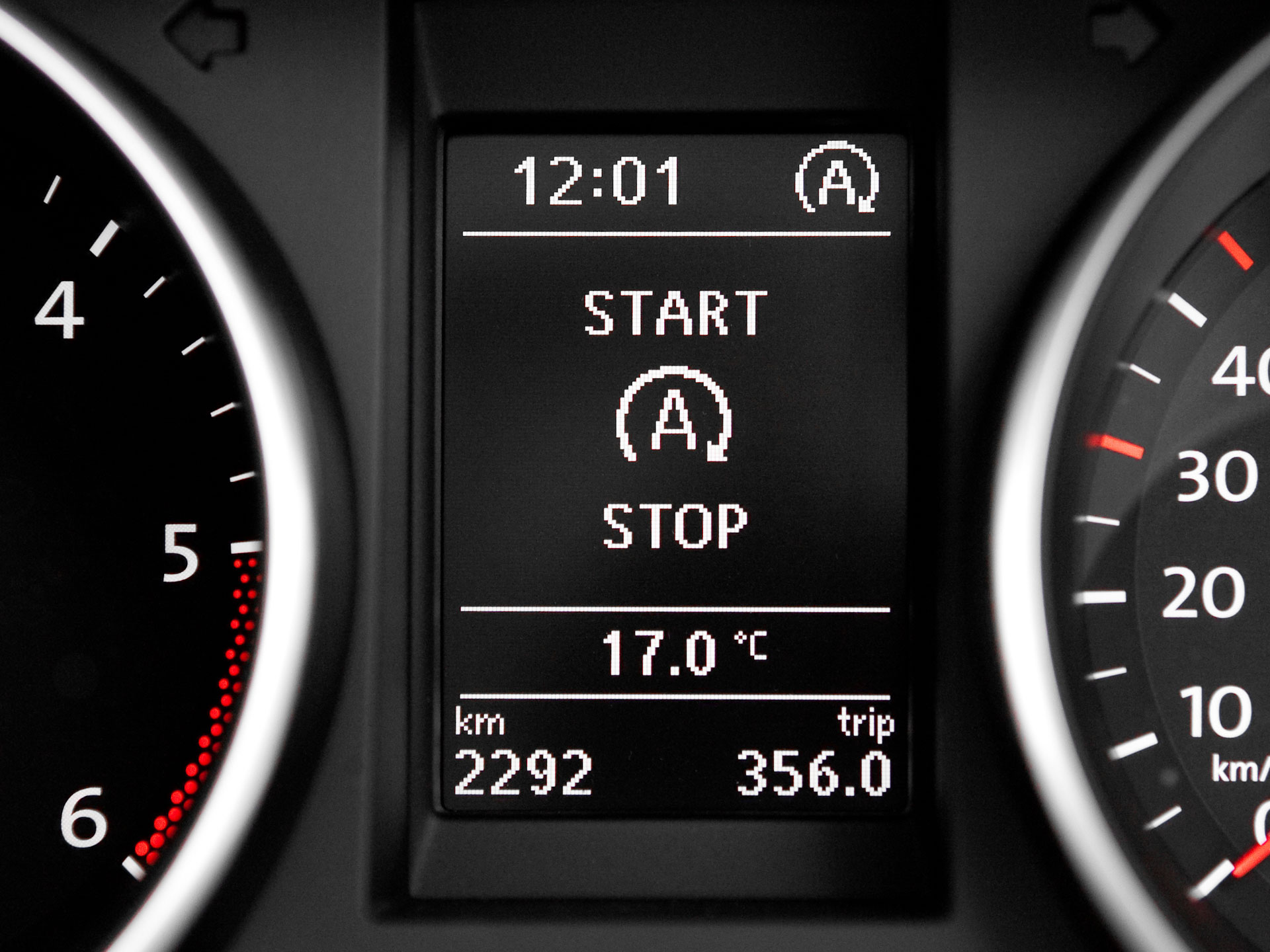What is automatic start-stop and how does it work?
This article contains:
Automatic Start-Stop A technical innovation which helps the environment
The idea behind the start-stop system is simple: If the engine is stopped for short periods, for example while waiting at traffic lights, fuel consumption and emissions are reduced. In this way, the automatic start-stop system helps to save fuel and protect the climate. With this technology, CO2– emissions can be reduced by 3 – 8%. The benefits to the environment and improved efficiency have caused a rapid spread of automatic start-systems to all classes of vehicle. In view of the more stringent EU regulations on pollutant emissions of motor vehicles, automotive manufacturers are also increasingly implementing intelligent start-stop systems in their ranges.
How automatic start-stop systems work
The start-stop system detects when the car is stationary and on the basis of sensors it determines a series of other factors about the operating mode of the vehicle. If the driver has stopped at a traffic light and sets the transmission to neutral, the start-stop system stops the engine. With some more recent models, the engine even switches off if the speed falls below a certain value. Although the engine, and therefore the primary source of power for all systems is switched off, all of the electrical consumers and assistants are still supplied with power. This is provided by the battery of the vehicle. As soon as the clutch is actuated, the automatic start-stop system restarts the engine. For vehicles with automatic or dual clutch transmissions, the automatic start-stop system responds to actuation of the brake alone. If the vehicle is braked to a standstill and the driver’s foot remains on the brake pedal, the automatic start-stop system stops the engine. When the brake is released, the automatic system starts the engine again.
Sensors control the automatic start-stop system
An automatic start-stop system obtains its information about the driving status from various sensors. A neutral gear sensor, wheel speed sensor and crankshaft sensor provide information about whether the car is moving or stationary. The engine controller coordinates the start-stop processes and harmonizes them with the engine management system. The electronic battery sensor (EBS) communicates data about the state of charge, voltage and battery temperature. As the voltage in the onboard network briefly falls each time that the engine is started, compensation is necessary to ensure the proper function of important devices and electronic assistants. . In order for the starter to withstand the stresses which are associated with the increased number of starts and not wear out prematurely, components of the starter unit which are subjected to particular stress are reinforced and designed for a long service life. This applies to the bearings, gear unit and engagement mechanism of the starter.
Recuperation and automatic start-stop systems New battery generations for innovative technologies
While conventional batteries reach their limits even in vehicles with automatic start-stop systems, batteries with AGM technology were specially designed for vehicles, which not only have start-stop technology, but also an energy recover (recuperation) system as well as other fuel-saving systems. A battery with AGM technology is able to accept the energy which it receives via recuperation with high efficiency. In contrast, batteries with EFB technology are only designed for cars with entry-level automatic start-stop systems.
![]()
This may also interest you: When is an upgrade to AGM worthwhile?
Recuperation – how electricity is generated from braking energy
During recuperation, or recovery of braking energy, electrical energy is generated as soon as the vehicle brakes and the engine goes into thrust mode. In cars with recuperation, the generator feeds the recovered energy back into the battery in order to use this to operate the comfort functions during the subsequent stop phase. With the use of this efficient technology and a powerful AGM battery, greater fuel savings can be achieved and emissions can be reduced further than with simple start-stop systems. To increase overall efficiency even further, in some vehicles, the generator, which normally runs all the time (and consumes engine power) is decoupled during acceleration phases. Therefore, the entire motor power is available for acceleration and the engine can work especially efficiently. In this phase, all electrical functions are powered by the battery – which again shows the importance of a powerful battery which is matched to the energy management system of the vehicle for modern onboard networks.

